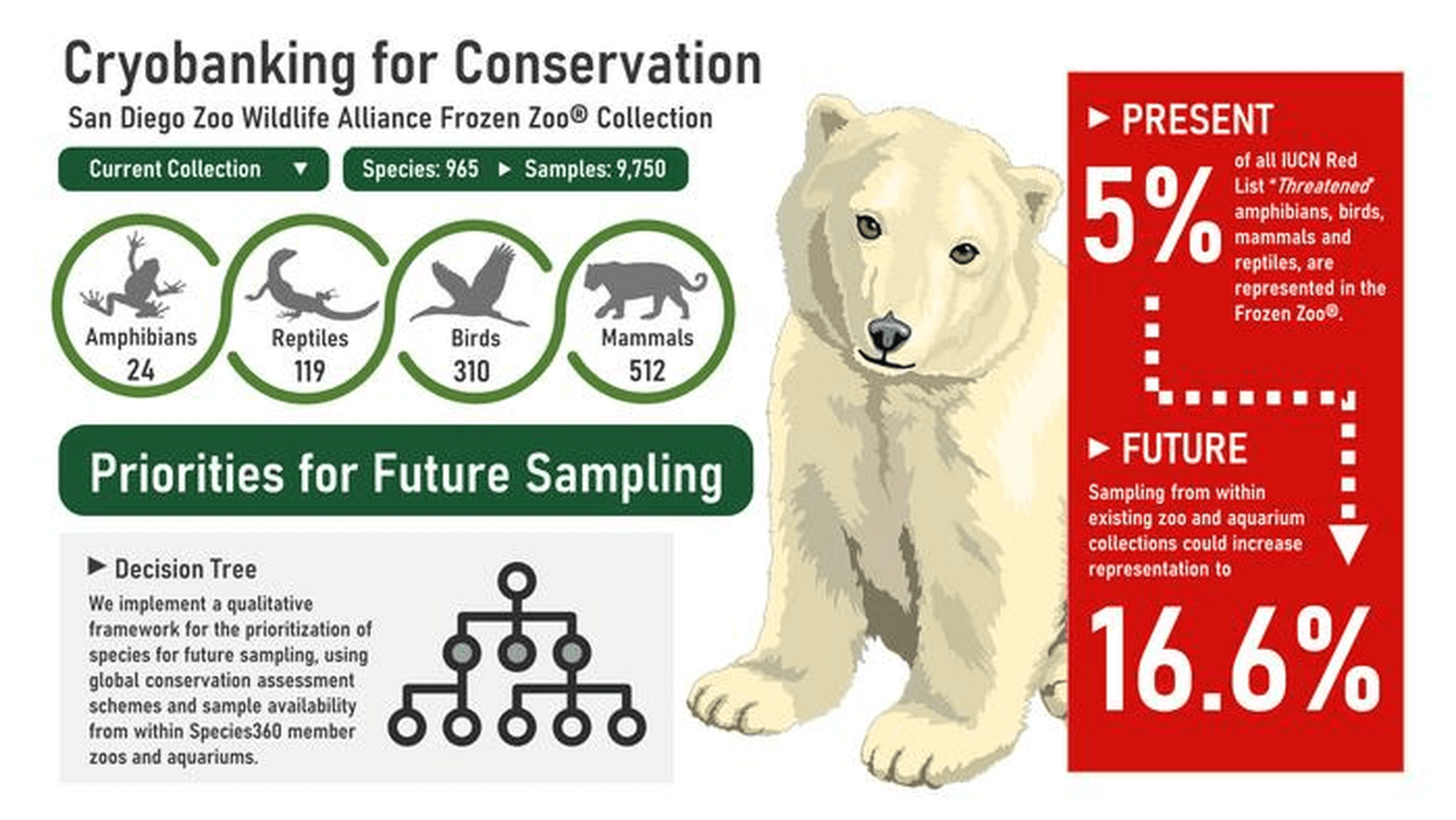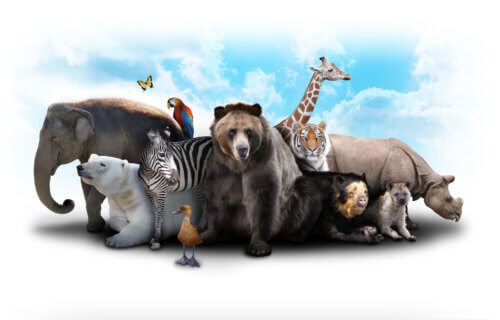DUBLIN, Ireland — Egg freezing is one-way women preserve their fertility to have a family in the future. Now, scientists believe cryo-freezing genetic samples from animals may hold the key to saving endangered species from disappearing forever.
A recent study highlighted the immense potential of living cell banks, also known as cryobanks, in conserving species worldwide. Living cell banks store genetic materials, including DNA, embryos, semen, and live tissue, at ultra-low temperatures. Scientists can use these preserved cells for genetic analysis, assisted reproductive techniques, maintaining genetic diversity in animal populations, and even reintroducing species back into their natural habitats.
The study examined the Frozen Zoo® at the San Diego Wildlife Alliance, the world’s largest collection of living genetic samples. By analyzing the contents of the Frozen Zoo®, researchers developed a framework to prioritize species for future sampling. They also utilized data from the Species360 Zoological Information Management System (ZIMS), the world’s largest species database, to identify opportunities for genetic sample collection.
The findings show that the Frozen Zoo® currently stores genetic samples from 965 different species, including five percent of threatened amphibians, birds, mammals, and reptiles listed on the IUCN Red List. By expanding sampling efforts in zoos and aquariums, this representation could increase to 16.6 percent, providing access to an additional 707 threatened species.
Furthermore, genetic samples of 50 percent of the species currently listed as extinct in the wild are already preserved in the Frozen Zoo®. With increased sampling from the zoological community, this number could rise to 91 percent, offering a lifeline for species on the verge of extinction.
“This study not only highlights the incredible work done by the San Diego Zoo Wildlife Alliance to date, but also the collective potential of the global zoo and aquarium community in further contributing to global cryobanking initiatives and conservation priorities,” says study author Dr. Andrew Mooney in a media release.
“Wildlife populations continue to decline around the globe, there has never been a more critical time to collect and preserve genetic samples from threatened species. Cryobanked samples provide unparalleled conservation opportunities, however we must make a concerted effort to work together and collect samples now, before it is too late.”

Cryobanking not only safeguards genetic diversity but also enhances species’ adaptability and resilience. Professor Yvonne Buckley from Trinity College Dublin highlighted the importance of cryobanking in safeguarding genetic diversity and reintroducing it into populations. Johanna Staerk from Species360 Conservation Science Alliance also noted the vital role of zoos and aquariums in conservation. These institutions provide a crucial resource for collecting genetic samples to ensure the future survival of species, especially since obtaining samples from wild species is challenging.
The success of cryobanking is exemplified by ongoing efforts to save the northern white rhino from functional extinction. With only two surviving females, scientists are utilizing assisted reproductive techniques using samples from the Frozen Zoo® to prevent the subspecies from disappearing forever. To maximize the effectiveness of cryobanking, the study authors propose the establishment of a global cryobanking database to facilitate collaborative efforts in preserving genetic diversity.
While some species, like the Yangtze River dolphin and Christmas Island pipistrelle, have gone extinct with no living samples available, sampling opportunities still exist for most species. As climate change threatens 71 percent of species listed as “least concern,” storing genetic samples now can help conserve these species in the future. Cryobanking offers a lifeline for species on the brink of extinction, providing hope for their survival.
The study is published in the journal Zoo Biology.
You might also be interested in:
- This endangered parrot species is actually thriving in urban Texas
- If humans disappeared, what would happen to our dogs?
- 200-million-year-old mass extinction event may be happening again right now

It’s a worthwhile idea and ought to be done, even now when species once thought extinct turn up with some regularity.
This will only work if people and technology are still around to do it…
What really bothers me about extinct animals is, most of them seem to have a very unique look to them compared to other animals they are related to, Hopefully, After reading this article, we will not loose other unique ceatures of our Mother Nature.
We need to eradicate humanity and let nature heal by itself we are bacteria in the universe destroying everything we touch specially animals. We are the real beast.
Those with wealth should never have power, it is the reason this planet and its inhabitants are being decimated.
Band aid solutions are never the answer to this destruction…we all pay for the actions of a few.
How many of the millions of species will be accommodated in this ‘ark’, and what about the insects? If the maximum estimate of 8.7 million is correct, and one species is preserved each day, the task will take something over 23,000 years. Maybe Bellingham is right after all.
Definitely not a “cool” solution. Changing our destructive ways would be better.